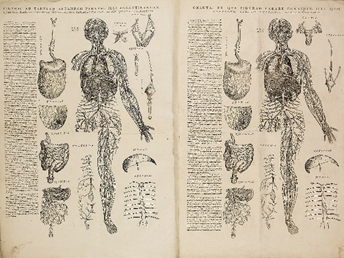

This resource enables students to build their own anatomical model based on the ones included in Andreas Vesalius groundbreaking 1543 work Epitome. This was a shortened version of his 700-page De humani corporis fabrica, an atlas of the human body based on Vesalius’ own postmortem dissections.
The Epitome included teaching illustrations rendered in painstaking detail made from direct observation, giving readers a revelatory insight into the reality of human anatomy. Vesalius included the revolutionary feature of paper manikins that readers could cut out an assemble. He intended these to reveal the three-dimensional complexity of the body, and the relationship between organs, in a similar way to that uncovered through the process of dissection.
This simplified self-assembly model is reproduced in the same style as the original, using Vesalius’ illustrations. The accompanying questions prompt students to consider the significance of the models in their historical context.
Something went wrong, please try again later.
This resource hasn't been reviewed yet
To ensure quality for our reviews, only customers who have downloaded this resource can review it
Report this resourceto let us know if it violates our terms and conditions.
Our customer service team will review your report and will be in touch.